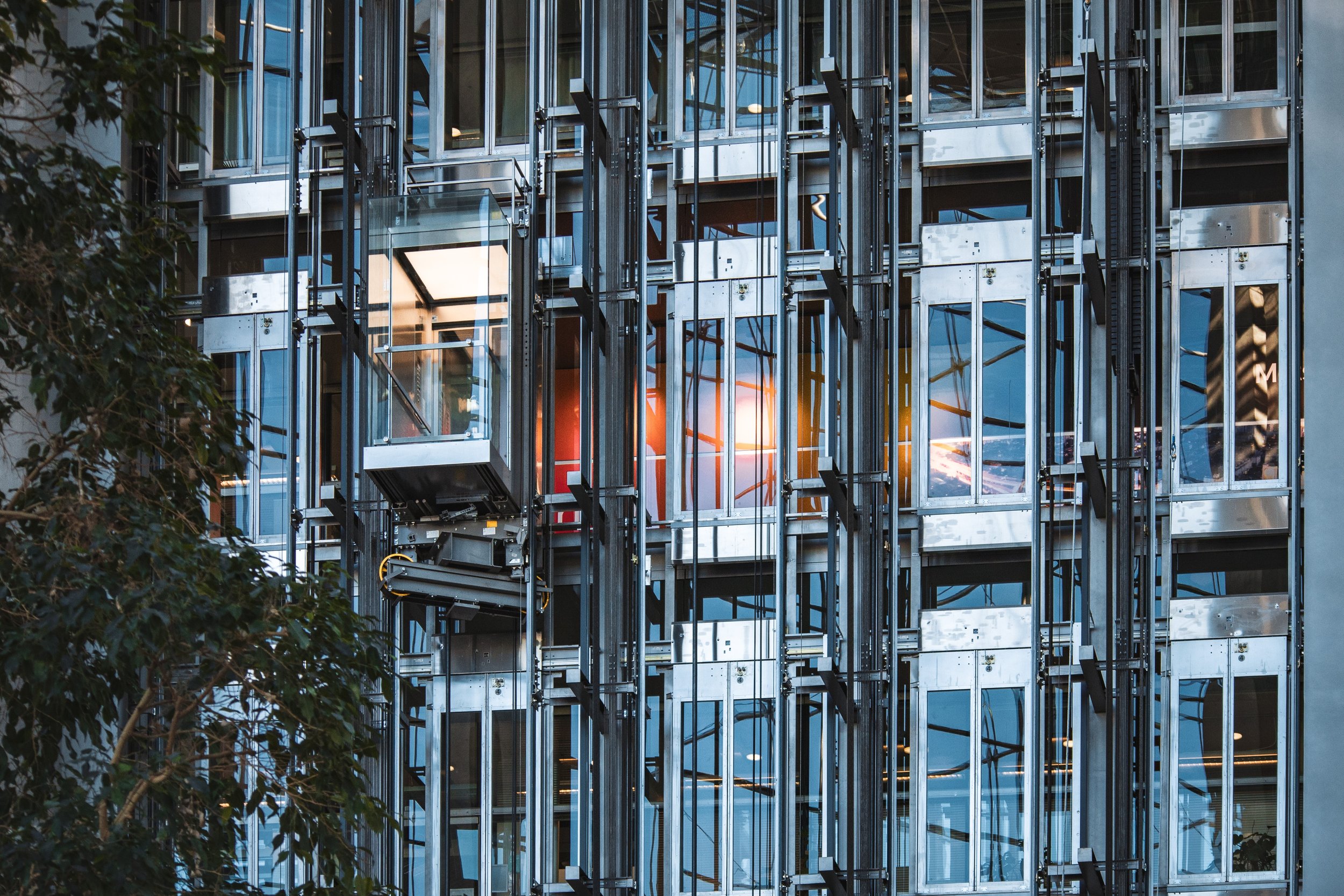Elevator Reliability in a Post-COVID World: Navigating Industry Shifts and Ensuring Smooth Vertical Transportation
Introduction
In the wake of the COVID-19 pandemic, the world has witnessed profound changes in various industries, and the vertical transportation sector is no exception.
How many building managers do you think have needed to revisit their operational procedures, safety protocols, and annual budgets to now layer in an extensive, pandemic-driven procedure? Probably a few.
But as commercial buildings begin to fill up again after experiencing minimal traffic from 2020 to 2022, the challenges have not dissolved, but have shifted. Maintaining elevator reliability has come to the forefront of the vertical transportation industry, and building managers are faced with new risks, and new opportunity.
Our team worked together to identify the lingering effects on elevator/escalator management during the COVID pandemic, and propose quick, cost-efficient solutions to safeguard for any future shifts in management and strategy.
Lingering Industry Impacts
The elevator and vertical transportation industry has undergone significant shifts since 2022, reflecting the changing dynamics of a post-COVID world.
Impact #1: The global supply chain disruptions caused by the COVID-19 pandemic have had ripple effects on the vertical transportation industry.
Manufacturers of elevator components and materials have faced challenges such as raw material shortages, production delays, and transportation bottlenecks. As a result, procurement costs have escalated, leading to higher prices for elevator equipment and services.
Building owners and developers have experienced budgetary constraints and project delays due to increased expenses and supply chain uncertainties.
A 2020/2022 Ernst & Young survey has aggregated substantial data that supports the impact of the global supply chain here
Impact #2: The pandemic has accelerated the demand for smart, touchless, and hygienic elevator solutions to minimize the risk of virus transmission in high-traffic areas.
Building owners and operators are investing in technologies such as contactless access control systems, destination dispatching, UV-C sterilization, and antimicrobial surfaces to enhance passenger safety and confidence.
While these innovations offer long-term benefits in terms of health and hygiene, they also entail upfront investment costs and ongoing maintenance expenses.
Not only will building owners and developers need to recognize industry trends, but they will need to ensure regulatory compliance and enhanced safety standards, all while working within their budgets, that may not yet factor in a ‘smarter’ investment.
Need to COVID-proof your vertical transportation investments? From assets, to purchase, maintenance, and compliance, we are here to help. Reach out to speak to a representative.
Impact #3: The post-COVID economic landscape has influenced real estate valuations and asset management strategies, particularly in the commercial property sector.
Buildings with well-maintained, reliable, and modernized elevator systems are perceived as more attractive investments due to their potential to enhance tenant satisfaction, operational efficiency, and asset value.
Conversely, properties with outdated or poorly maintained elevators may face depreciation in asset value, higher vacancy rates, and increased operational costs.
Investors and asset managers must now place a greater emphasis on the quality and condition of vertical transportation infrastructure when assessing property portfolios and making investment decisions. However, the need for investment lives is in sharp contrast to what businesses can actually get accomplished. A 2024 analysis provided by Forbes suggests capital planning investment is down and that lenders are pulling back, resulting in “significant impact on local commercial real estate operators that tend to focus on relationships with local banks for financing acquisitions.”
Reemergence of Elevator Traffic
As economies reopen and businesses resume operations, commercial buildings are once again experiencing an influx of occupants.
The return to pre-pandemic levels of foot traffic within these buildings underscores the critical importance of elevator reliability. However, the sudden surge in usage has exposed the vulnerabilities of elevator management during the pandemic years.
In light of these challenges, ensuring elevator reliability in a post-COVID world requires a proactive approach that encompasses preventive maintenance, modernization initiatives, and strategic planning. Here are some key strategies to consider:
Regular Maintenance and Inspections: Implementing a comprehensive maintenance schedule and conducting regular inspections are essential to identify potential issues before they escalate into major problems.
Elevator components should be lubricated, adjusted, and tested to maintain optimal performance and safety standards.
Modernization and Upgrades: Older elevator systems may require modernization to enhance efficiency, reliability, and safety.
Upgrading outdated components, installing state-of-the-art technology, and implementing energy-efficient solutions can prolong the lifespan of elevators and minimize downtime.
Strategic development and modernization planning, a budget review, and optimization strategies can help reduce costs while meeting user and regulatory demands.
Leveraging advanced monitoring systems and predictive analytics can help anticipate maintenance needs and detect anomalies in real-time. Remote monitoring enables proactive troubleshooting, predictive maintenance scheduling, and timely intervention to prevent critical failures.
Emergency Preparedness and Response Plans: Developing robust emergency preparedness and response plans is crucial to address elevator breakdowns, power outages, and other unforeseen circumstances promptly.
Clear communication protocols, emergency evacuation procedures, and contingency measures should be established to ensure passenger safety and minimize disruptions.
It’s time to “Covid-Proof” your Elevator Contract: The evolving strains of the COVID virus can only indicate that one day, we will again face an unforeseen impact to the industry that will lower the use of vertical transportation assets (pandemic-sourced or otherwise!)
To safeguard against paying full elevator service fees during a pandemic, we provide our clients with specific language to use in their vertical transportation service contracts. Learn more about our Custom Maintenance Specification services here.
In conclusion, elevator reliability remains paramount in a post-COVID world where commercial buildings are once again bustling with activity. By prioritizing preventive maintenance, modernization initiatives, and strategic contract planning, it is possible for building owners and property managers to mitigate risks, lower costs, enhance safety, and optimize vertical transportation efficiency.
Partner with an experienced elevator consulting company to provide the expertise and support needed to navigate the post-COVID vertical transportation sector. Contact us today!

